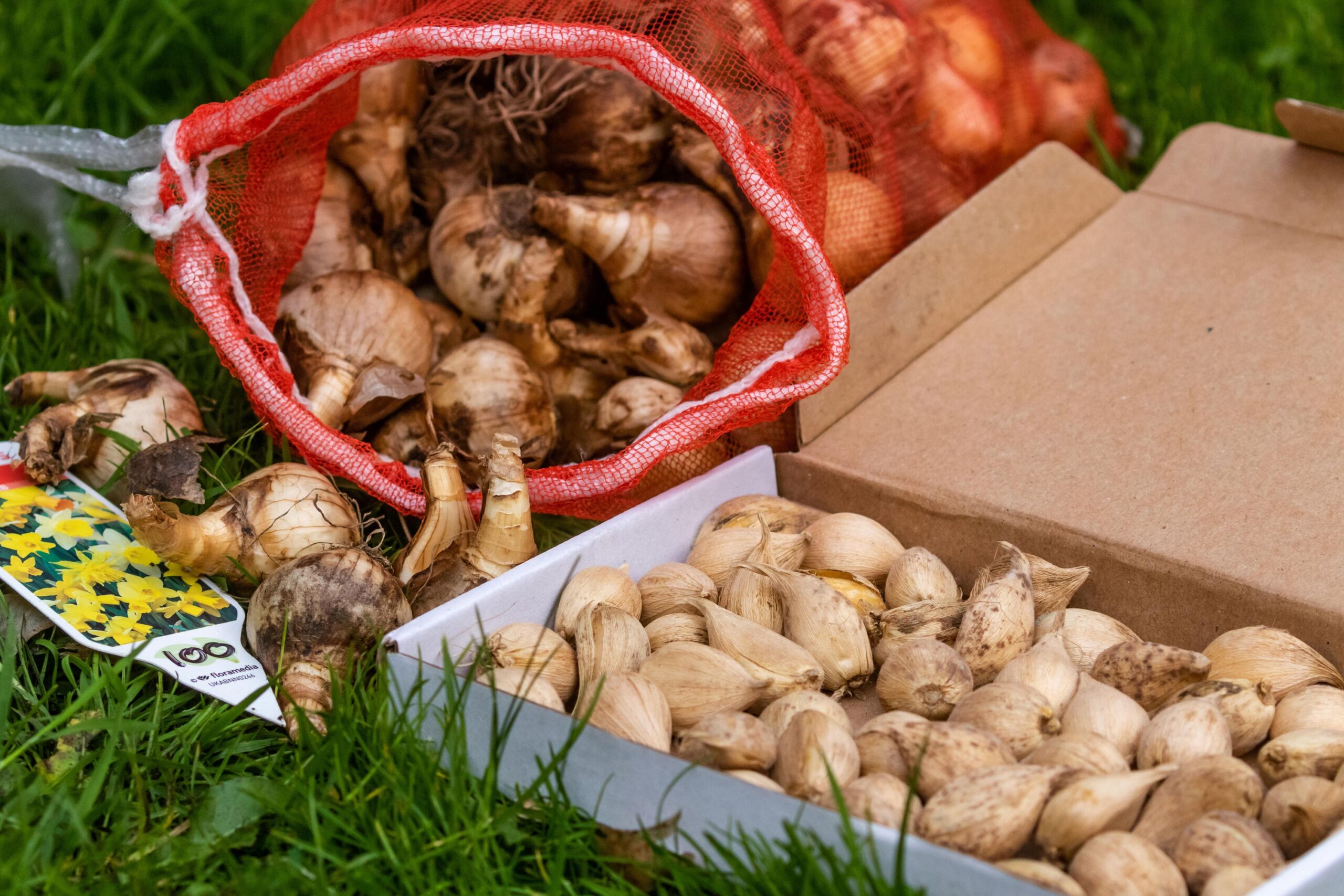Why do my flower bulbs fail?
8 common mistakes gardeners make when planting autumn bulbs and solutions for spring bulb success.
Do you end up with squat tulips, daffodils that don’t flower, and damaged or disappointing spring bulbs after planting them out in autumn?
Bulb specialist Chris Ireland-Jones, owner of Avon Bulbs, runs through the common mistakes you could be making, and how to correct them…
Mistake 1: Lack of preparation
Ireland-Jones asks: “Are you choosing the right spot for the bulbs you’ve bought and have you researched whether this is ideal territory for them? There’s nothing worse than trying to fight nature. Quite often, people are planting tulips in too much shade or woodland bulbs in full sun.”
Solution: Find the right bulb for the right location
View this post on Instagram
Do more research into finding the right bulb for the right location, think about where you are going to plant them and check which bulbs are suitable.
Mistake 2: Wrong planting depth
“Many people don’t plant things as deeply as they should, and there are very few bulbs which want to be planted very shallowly,” notes Ireland-Jones.
Solution: Plant deeper
Not sure how deep to plant your spring-flowering bulbs?
Watch our easy-to-follow video guide! Now is the perfect time to plant. #bulbs #plantingbulbs #depth #ilovegardening pic.twitter.com/MJ2FYa4Xfv
— Squire’s Garden Ctrs (@SquiresGC) October 9, 2020
“If you have enough depth of soil, then slightly exceeding the planting depth suggested on the packet is no bad thing and allows you to do more gardening over the top of the bulbs you’ve planted.
“The deeper they are, often the ground is cooler and the soil more moist, which helps considerably. The rule of thumb is plant three times the length of the bulb, but don’t worry about going beyond that guideline.”
Mistake 3: Planting tulips too early
View this post on Instagram
“If tulips go into ground which has been affected by tulip fire and they go in when the ground is still warm (say in September or October), they are much more likely to be affected by tulip fire,” he warns. Tulip fire is a fungal disease that usually occurs when the soil is too wet or the atmosphere still and damp.
Solution: Plant tulips from November
Tulips in particular benefit from being planted in November or even December, when there’s less danger they will succumb to tulip fly.
Mistake 4: Not planting the bulbs soon enough after buying them
View this post on Instagram
“We’ve had situations where people have put their bulbs away on receiving them and then forgotten them, and wonder if they can leave planting until the next year. The answer is no. They have probably started putting on shoots in the box.”
Solution: Don’t delay autumn planting
Put your newly delivered bulbs where you will see them – not in some corner of the garage where you’ll forget about them. If you really can’t plant them immediately, keep them cool and dry.
“If they’ve come in plastic packets, open them to make sure they can breathe,” says Ireland-Jones. “If they are in paper packets, make sure there’s air movement around them to keep them dry. Almost all bulbs can be kept happily like that for two or three weeks – but not months on end.
View this post on Instagram
“There are some exceptions. Erythroniums, which are woodland plants, and Anemome nemorosa tend to desiccate if kept dry for too long and don’t like being handled. They should be kept moist and in the medium in which they are supplied, like coir. In those conditions, planting can be delayed for two or three weeks.
“A certain amount of sprouting won’t harm bulbs, but if they’ve gone further than that, you may have to plant them more shallowly the first year.”
Mistake 5: Underwatering

Tulips may be squat if they don’t have enough water
“Customers have reported this year that they’ve had a lot of problems with tulips in pots and didn’t realise how dry it was in March. A gardening writer summed it up: ‘You think it’s raining, but it never rains on your pots’, which is a good analogy.”
Solution: Keep pots watered as spring approaches
“It doesn’t matter if it rains, you still need to water your pots. We water our tulips at least twice a week in March, April and through May, once the leaves are emerging and they are photosynthesising and using up moisture in order to produce more leaf and stem. If they are desiccated, wizened and distorted, it’s often because they weren’t getting enough moisture when they were doing all that growing.”
Mistake 6: Allowing them to become too wet
If your compost is claggy and not free-draining, this can rot the bulbs.
Solution: Use free-draining compost
Use more free-draining compost, adding grit if necessary, and make sure your containers have drainage holes in them, he advises. Put your finger into the soil to assess how wet it is.
Mistake 7: Letting your compost freeze
“In colder areas, if you allow the compost which is holding your bulbs to freeze, the moisture in it is going to go solid and any bulbs in it will become stressed and squeezed by the frozen compost.”
Solution: Protect the pots
“Having them slightly drier under those conditions will help. Put them in a slightly sheltered position, up against the wall of the house or where the wind doesn’t whistle round quite so much, or place the pot where it gets the sun or the heat from the house a bit more, just to modify that temperature
“If it’s worse than that, you are going to have to wrap the pots and bring them in so that they aren’t frozen solid. Smaller pots freeze quicker than bigger pots, so try to go for a larger pot.”
Mistake 8: You’ve chosen less reliable bulbs
Some bulbs are more robust than others, Ireland-Jones agrees.
Solution: Look for the Award of Garden Merit
“I’d go back to the older varieties and see if they’ve got an Award of Garden Merit,” he suggests. “That has an indication of longevity.
“Look up the bulb online and if it shouts ‘new’ at you, try to find out if other people have tried it and whether it has a history to it. Reliable bulbs including daffodils like ‘February Gold’, ‘Minnow’ and ‘Thalia’ have all stood the test of time.
View this post on Instagram
“All our orange tulips are scented, so I’d go with ‘Ballerina’ or ‘Annie Schilder’, just because I think scent is very important. Muscari are also easy enough – they are thuggish and won’t give you many problems. I’d go for the bigger forms of crocuses such as Dutch crocuses (Crocus vernus), which are more robust than some.”
The Press Association
Latest posts by The Press Association (see all)
- In Pictures: Party stalwart kept New Labour in touch with traditional supporters - November 21, 2024
- 6 easy indoor exercises to try this winter – and why they are good for you - November 19, 2024
- Martin Clunes: I can’t afford to retire – I’ve got too many horses - November 19, 2024
- How to avoid plant losses, flowering disappointments and container catastrophes - November 17, 2024
- John Lewis Christmas ad stars sister in last-minute dash back in time - November 14, 2024





















